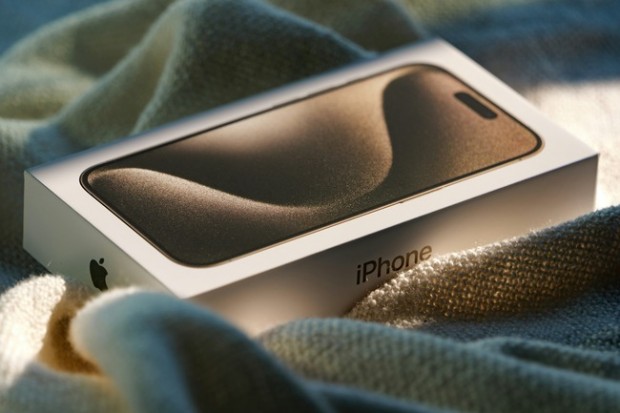How to Activate Stolen Device Protection on Your iPhone with iOS 17.3
How to Activate Stolen Device Protection on Your iPhone with iOS 17.3
Austin Jay
Users of iPhones and iPads may now download the recently released iOS 17.3 and iPadOS 17.3, which significantly improve upon previous versions. Stolen Device Protection is a notable addition, securing private information by requiring biometric authentication for actions like accessing passwords and making purchases.
iOS 17.3 Update Rolls Out
The update introduces features like AirPlay support in select hotels, a Unity wallpaper honoring Black history for the Lock Screen, and collaborative Apple Music playlists with emoji reactions. AppleCare & Warranty in Settings also displays coverage for all devices linked to your Apple ID. The update aims to enhance security, convenience, and user collaboration, providing comprehensive improvements and features for Apple device users.
iOS 17.3 introduces a crucial security upgrade for iPhones with the addition of Stolen Device Protection, addressing the prevalent issue of phone theft. This feature significantly enhances the device's security by imposing restrictions on sensitive settings when the iPhone is not in a familiar location.
Changes to these settings require Face ID or Touch ID, providing an additional layer of protection, even if a thief possesses the passcode. Furthermore, a one-hour "security delay" mandates extra biometric authentication for critical operations, enhancing security againsts unauthorized access attempts.
As cybersecurity experts commend this move, users are encouraged to activate Stolen Device Protection.
How to Activate Stolen Device Protection
The process is straightforward: update iOS 17.3, navigate to Settings, scroll to Face ID & Passcode, locate Stolen Device Protection, and toggle the switch to enable the feature. By taking these steps, users contribute to making unauthorized access more challenging, increasing the overall security of their iPhones.
Also, Apple Music subscribers can now create collaborative playlists with the release of the iOS 17.3 update. This feature allows users to invite friends and family to contribute tracks to a shared playlist, facilitating easy music sharing and planning for events like parties. Users can also use emojis to react to specific songs.
To utilize the feature, navigate to a playlist, click the "Collaborate" button, and invite others. Initially delayed to 2024, this launch follows Spotify's introduction of a similar collaborative playlist feature named "Jam." The update provides Apple Music users a convenient way to engage in shared music curation.
Also Read: How To Use Mobile Phone For Business
Recent Updates from Apple
Apple also has released watchOS 10.3, introducing the Unity Bloom Apple Watch face as part of the 2024 Black Unity collection. The face, representing Pan-Africanism, features abstract flowers and symbolizes intergenerational harmony addressing injustices. Users can select between single or full-bloom styles, with flowers blooming on wrist raises.
The accompanying Sport Band, adorned with colorful flowers, carries the words "Truth, Power, Solidarity" on its pin. Alongside bug fixes and security patches, watchOS 10.3 enhances overall stability. Apple also rolled out iOS 17.3 and iPadOS 17.3 for iPhone and iPad users, accompanied by the new Unity Bloom wallpaper.
To update, users can use the Watch app on their iPhone or access Settings > General > Software Update on their Apple Watch. Note that watchOS 10.3 requires an Apple Watch Series 4 or later.
Related Article: How To Customize Almost Everything On Your Samsung Galaxy Lock Screen In One UI 6
most read
related stories
more stories from How To
-
How to Play Retro Video Games on iPhone Using Delta Emulator
Unlock retro gaming nostalgia on your iPhone with Delta Emulator. Learn how now!
ernest hamilton -
Squad Busters' Soft Launch: Initial Impressions and Global Potential
Discover the potential of Squad Busters' soft launch and its global impact. Read now!
ernest hamilton -
'Monopoly GO:' Unveiling Electric Escape Rewards and Achievements
Embark on an electrifying adventure in Monopoly GO! Uncover Electric Escape rewards and achievements. Don't miss out on the excitement!
ernest hamilton -
'Monopoly GO:' What Happens to Leftover Shovels (Pickaxes) Post Anniversary Treasures Event
Discover what happens to leftover shovels after the 'Monopoly GO' Anniversary Treasures event. Read now for all the details!
ernest hamilton -
'Monopoly GO:' Unlock Go for Gold Gala Rewards and Achieve Milestones
Unlock exclusive rewards and reach milestones in 'Monopoly GO: Go for Gold Gala.' Don't miss out on the fun!
ernest hamilton -
'Monopoly GO:' Discover All Anniversary Bash Rewards and Milestones
Dive into 'Monopoly GO's' Anniversary Bash with exclusive rewards and exciting milestones. Don't miss out!
ernest hamilton -
'MONOPOLY GO!' Clean Quest Tournament Event: Milestones, Rewards, and Exciting Details
Discover the exciting details of the 'MONOPOLY GO!' Clean Quest Tournament Event, from milestones to rewards. Get ready for an adventure!
ernest hamilton -
How to Photograph April 8th's Solar Eclipse with Your Smartphone
Capture the moment! Learn how to photograph April 8th's solar eclipse with your smartphone. Follow our guide for stunning eclipse shots. Start shooting now!
ernest hamilton


















